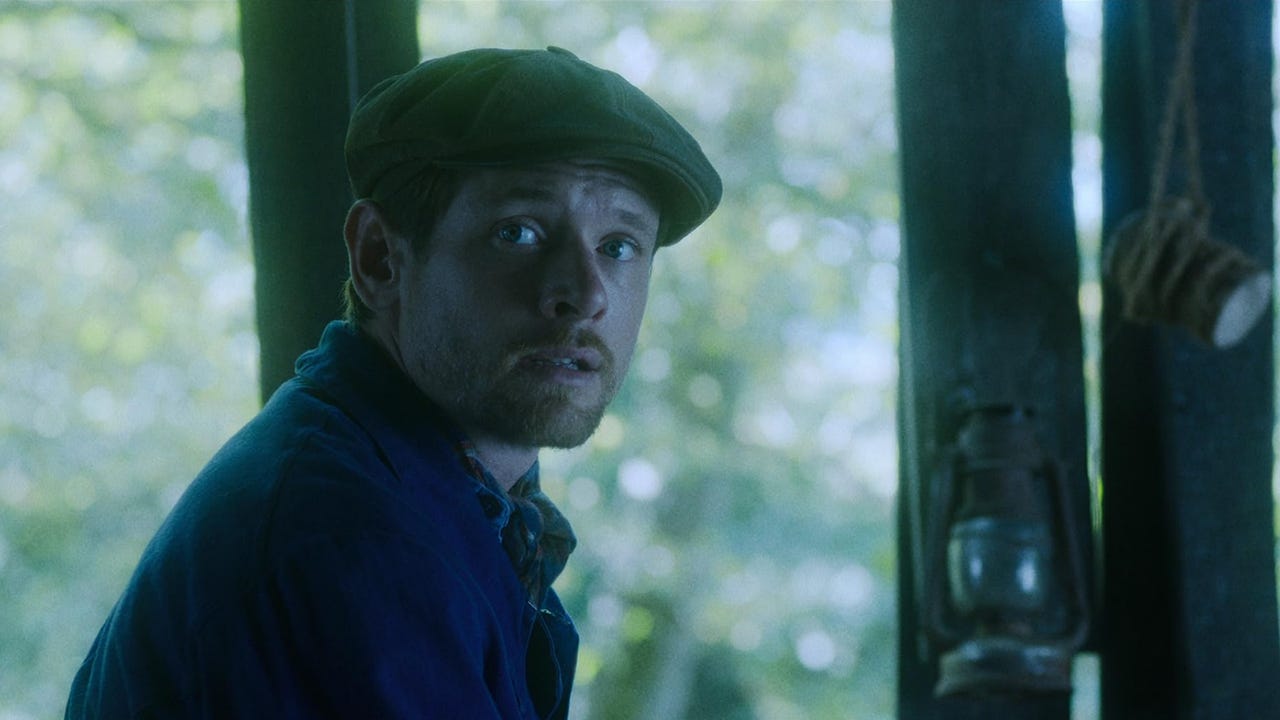www.zdnet.com
Prakhar Khanna/ZDNETThe world's thinnest book-style foldable, the Oppo Find N5, is finally here. I've had it for a week, and it has surprised me in more ways than one -- both positively and negatively.At 8.93mm thick when folded, it's closer to slab phones than any other foldable has ever been. But that slimness didn't come without compromises. Judging by the on-paper camera specifications, I expected it to be underwhelming, but it's better than other foldable phones in almost every regard.Also: The best phones to buy in 2025Here's what it's like to use the thinnest book-style foldable phone in the world -- from someone who has used the previous world's thinnest foldable phones.I love the new, refined design Prakhar Khanna/ZDNETThe Oppo Find N5 weighs 229 grams and measures 8.93mm in thickness, but what truly makes it feel like a slab phone is its flat sides.For the first time ever, I mistook a foldable phone for a slab phone when pulling it out of my pocket. Unlike Honor's curved sides, the Find N5's flat design eliminates the gap between the folded sides, making it feel close to seamless. Both phones are comfortable to hold, but I was pleasantly surprised by the Find N5's design. The Galaxy Z Fold 6 also has flat sides, but its odd cover screen aspect ratio keeps it from blending in with slab phones.For context, the iPhone 16 Pro Max is 8.25mm thick, and the Pixel 9 Pro is 8.5mm thick. The Oppo Find N5 is closer to slab phones than any other foldable.Alos:I used Huawei's $3,600 tri-foldable, and it made every phone I've ever tested feel outdatedUnfold it, and you're greeted with a 4.21mm-thin device that feels like a sheet of hard paper. It's not the thinnest foldable -- that title remains with the Huawei Mate XT Ultimate tri-fold phone at 3.66mm (which is fantastic) -- but Oppo's phone is the thinnest book-style foldable.The slim profile translates to a great real-life experience for reading and browsing. It's easy to unfold, the crease is as minimal as it gets, and the hinge is strong enough to inspire confidence. However, Samsung's hinge remains the most polished because it stays exactly at the angle I want. The Find N5's hinge snaps fully open after a certain degree, which takes some getting used to. Prakhar Khanna/ZDNETWhen I first unboxed the phone, I almost couldn't feel the crease with my finger. It was barely noticeable and the best I've seen on a foldable phone. After a week of use, it has become slightly deeper and can be felt when running a finger over it. A similar thing happened when I used the OnePlus Open, but it didn't worsen over time, so I wouldn't worry about it.The 8.2-inch inner display is great for reading. It seems less reflective than the cover screen, which enhances the reading and browsing experience. The front display is more reflective in direct light but offers more vivid colors. If your use cases involve productivity, browsing, and reading, you're going to love this LTPO AMOLED screen. It reaches 1,400 nits outdoors for legibility and up to 2,100 nits for supported HDR content, making for a more immersive viewing experience.Also:The best Android phones to buy in 2025The Oppo Find N5 is slightly taller than before and features a 6.62-inch cover screen with a peak brightness of 2,450 nits and 1,600 nits in high brightness mode. The 20.7:9 aspect ratio makes watching videos better, and you can use it in tent mode, half-unfolded, to avoid thick black bars on the bigger display.This is where the Huawei tri-fold is extremely helpful with its 16:11 aspect ratio on a 10.2-inch screen. Book-style foldables don't necessarily offer a better movie-watching experience than slab phones, but a tri-fold does. However, Oppo allows content to be watched on the cover screen in tent mode, which is a welcome addition.The best battery life on a foldable Prakhar Khanna/ZDNETThe Oppo Find N5 packs a 5,600mAh silicon-carbon battery with support for 80W wired charging and 50W wireless AIRVOOC charging. It might not seem big for a phone with an 8.2-inch display, but it's efficient and easily lasts a full day.Over the past week, my usage included social media (X, Instagram, and Threads), communication apps (WhatsApp, Slack, and Teams), browsing on Chrome, attending calls, and snapping photos. I consistently went to bed with at least 15% battery remaining.The Oppo Find N5 is powered by the Snapdragon 8 Elite chipset, but it's different from the flagship Qualcomm processor found on the Galaxy S25 Ultra and the OnePlus 13. Instead of an 8-core CPU, it has a 7-core CPU, but Oppo promises similar performance and efficiency.Also:Why I'm recommending the standard Galaxy S25 over the Ultra this year - and don't regret itI haven't played recent demanding games on it yet. However, I noticed a few lags when trying to reply to an urgent email with GTA: San Andreas running in the background after 25 minutes of play. Oppo's Championship mode (accessible by swiping right from the left edge during gameplay) allows you to enter a game mode with better performance and no notifications for a more immersive gaming experience.The Oppo Find N5 runs ColorOS 15 based on Android 15, featuring numerous AI-powered tools. I like AI Unblur for improving blurry shots, and AI Eraser does a great job removing unwanted objects from photos. You also get Google's Circle to Search and Gemini, but please, write your own emails.A camera downgrade but still a good enough system Prakhar Khanna/ZDNETThe Oppo Find N5 sports a triple rear camera setup, led by a 50MP main sensor with optical image stabilization (OIS). It's a slight downgrade from the larger primary camera on the Find N3/OnePlus Open, but daylight performance remains solid.It is accompanied by a (smaller in size) 50MP periscope telephoto sensor with 3x optical zoom, 6x in-sensor zoom, and OIS. You also get an 8MP ultrawide camera, which is a downgrade from the 48MP ultrawide on its predecessor.Also: The best foldable phones of 2025: Expert tested and reviewedIt's a weaker camera system overall, but would I trade it for a more capable camera setup in a thicker design? Maybe. I prefer having the best camera system available, and OnePlus delivered that with the Open -- it was the brand's best camera system yet, which is why this downgrade doesn't sit right with me. But there's a way to extract the most out of these three lenses. 1x, 3x and 6x photos captured on Oppo Find N5 Prakhar Khanna/ZDNETIn good lighting, you get vibrant, bright colors with Hasselblad tuning and excellent dynamic range. Both the primary and telephoto cameras deliver great daytime shots. Portrait quality is also good. In fact, the 6x in-sensor zoom is the best on a foldable. I've captured some very good looking photos.In low-light conditions, however, you start noticing the impact of smaller sensors. Night photos aren't as impressive. Here are some examples: Low-light portraits shot on Oppo Find N5 Prakhar Khanna/ZDNETThese photos were clicked in indoor yellow lighting at around 4 p.m., so it wasn't exactly dark. From my t-shirt to my face, the colors are off and the portrait mode didn't process well. The nighttime outdoor photos are slightly better but I believe most people click photos of their favorite fellow humans in indoor lighting, and this isn't the device for it.Also: I've used this foldable phone for more than a year - and it's not a Samsung or GoogleI've found the Master mode to help quite a bit with this while also giving me the freedom to capture RAW and play around with those photos in Lightroom. Even if you don't capture in RAW, shooting photos in Oppo's Master mode can help as it removes the Hasselblad processing and outputs non-processed results, which are sometimes better-looking.The camera system isn't the most impressive but when compared to its competitors, it still stacks up well against the likes of Samsung and Google foldables. However, the OnePlus Open was better in some regards. Oppo Find N5 and Galaxy Z Fold 6 crease Prakhar Khanna/ZDNETOverall, the Oppo Find N5 has excellent hardware and is the closest a foldable has gotten to a slab phone. It's unlikely to launch in the US, and OnePlus has confirmed there won't be an Open 2 this year. As for me, I love using it for its lightweight, comfortable form factor, excellent battery life, bright displays, and the Master mode in the camera app.Featured reviews












